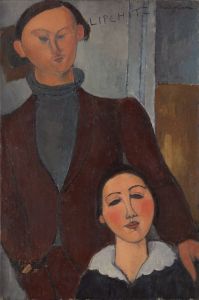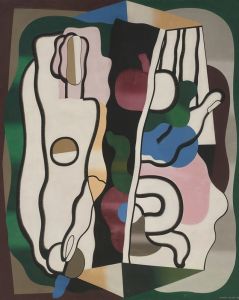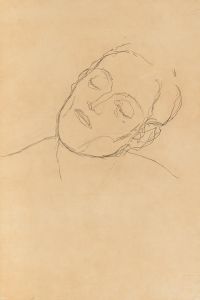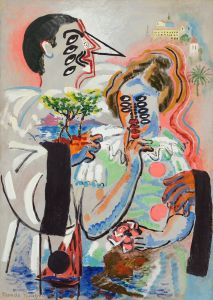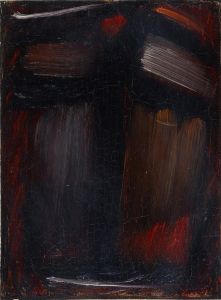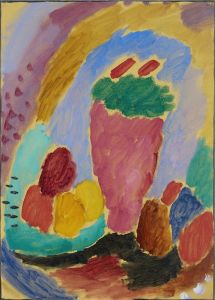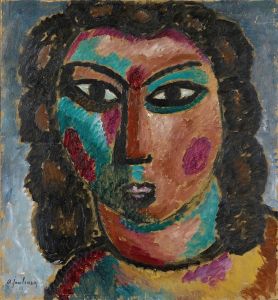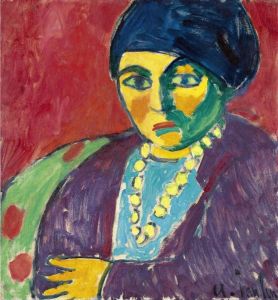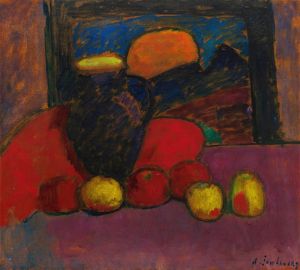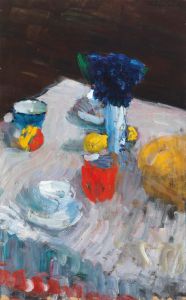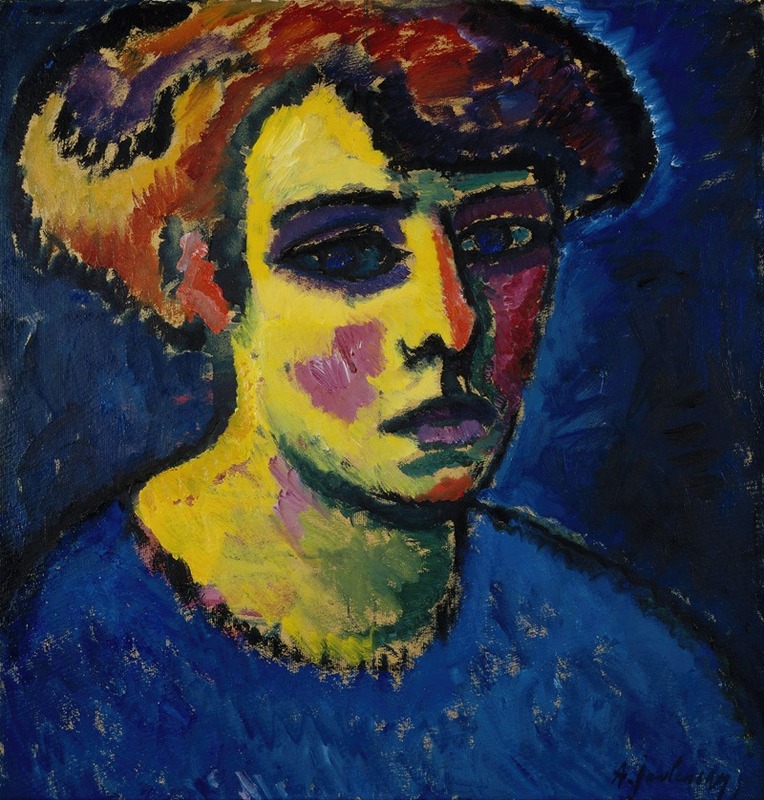
Frauenkopf
A hand-painted replica of Alexej von Jawlensky’s masterpiece Frauenkopf, meticulously crafted by professional artists to capture the true essence of the original. Each piece is created with museum-quality canvas and rare mineral pigments, carefully painted by experienced artists with delicate brushstrokes and rich, layered colors to perfectly recreate the texture of the original artwork. Unlike machine-printed reproductions, this hand-painted version brings the painting to life, infused with the artist’s emotions and skill in every stroke. Whether for personal collection or home decoration, it instantly elevates the artistic atmosphere of any space.
"Frauenkopf" (translated as "Woman's Head") is a painting by the Russian expressionist artist Alexej von Jawlensky. Jawlensky, born in 1864 in Torzhok, Russia, was a prominent figure in the early 20th-century art scene and is best known for his vibrant use of color and form, which were influenced by his association with the German Expressionist movement.
Jawlensky moved to Munich in 1896, where he became associated with other avant-garde artists, including Wassily Kandinsky. He was a member of the Neue Künstlervereinigung München (New Artists' Association of Munich) and later the Blaue Reiter (Blue Rider) group, which played a crucial role in the development of abstract art.
"Frauenkopf" is part of Jawlensky's series of works focusing on the human face, a subject he explored extensively throughout his career. This series is characterized by its bold use of color and simplified, almost abstract forms. Jawlensky's approach to portraiture was not to capture the physical likeness of his subjects but to convey their inner spiritual essence through the use of expressive color and form.
The painting "Frauenkopf" exemplifies Jawlensky's mature style, which he developed during the 1910s and 1920s. In this period, he created numerous variations of the human face, each with a unique combination of colors and shapes. These works are often seen as meditative and introspective, reflecting Jawlensky's interest in spirituality and the inner life.
Jawlensky's use of color in "Frauenkopf" is particularly noteworthy. He employed a vibrant palette, often juxtaposing complementary colors to create a sense of harmony and intensity. The facial features in "Frauenkopf" are stylized and abstracted, with an emphasis on the eyes, which are rendered as deep, soulful windows into the subject's inner world.
The composition of "Frauenkopf" is typically symmetrical, with the face occupying the central position on the canvas. This symmetry, combined with the bold outlines and flat areas of color, gives the painting a sense of stability and timelessness. Jawlensky's technique involved layering colors to achieve a luminous, almost glowing effect, which adds to the spiritual quality of the work.
Throughout his career, Jawlensky's art was influenced by various movements and artists, including Fauvism, Cubism, and the works of Vincent van Gogh and Paul Gauguin. However, he developed a distinctive style that set him apart from his contemporaries. His focus on the human face as a vehicle for expressing deeper emotional and spiritual truths was a central theme in his oeuvre.
"Frauenkopf" is a testament to Jawlensky's ability to transcend mere representation and create works that resonate on a deeper, more universal level. His innovative use of color and form has left a lasting impact on the development of modern art, and his works continue to be celebrated for their emotional depth and spiritual resonance.
Alexej von Jawlensky passed away in 1941 in Wiesbaden, Germany. His legacy lives on through his influential body of work, which remains an important part of the history of expressionist and modern art. "Frauenkopf" is a significant example of his artistic vision and continues to be admired for its bold, expressive qualities.





